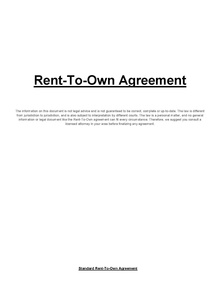The examples and perspective in this article deal primarily with the United States and do not represent a worldwide view of the subject. (February 2015) |

Rent-to-own, also known as rental purchase or rent-to-buy, is a type of legally documented transaction under which tangible property, such as furniture, consumer electronics, motor vehicles, home appliances, engagement rings, and real property, is leased in exchange for a weekly or monthly payment, with the option to purchase at some point during the agreement.
A rent-to-own transaction differs from a traditional lease, in that the lessee can purchase the leased item at any time during the agreement (in a traditional lease the lessee has no such right), and from a hire purchase/installment plan, in that the lessee can terminate the agreement by simply returning the property (in a hire purchase the buyer has a limited time, if any, to cancel the agreement).[1]
The usage of rent-to-own transactions began in the United Kingdom and Europe,[when?] and first appeared in the United States during the 1950s and 1960s.[2] While rent-to-own terminology is most commonly associated with consumer goods transactions, the term is sometimes used in connection with real estate transactions.[3]
- ^ Lacko, James (April 2000). "Survey of Rent-to-Own Customers, April 2000" (PDF). Federal Trade Commission. Retrieved 7 April 2011.
- ^ "Rent-A-Center, Inc. History". Retrieved 7 April 2011.
- ^ Marino, Vivian (4 December 2008). "The Maybe Option". The New York Times. Archived from the original on 2009-04-11. Retrieved 22 December 2021.